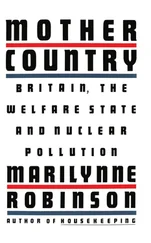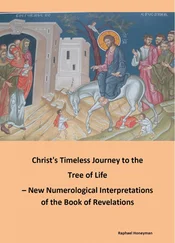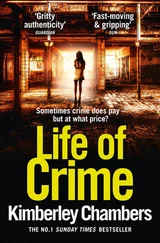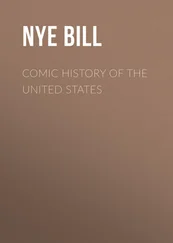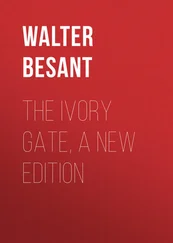Slowly, amid passionate rows between the various churches about who should be aided, and between all of the churches and those few who favoured state education about whether the godless state even ‘had a right to educate’, government aid spread to books, equipment and teachers’ salaries. In 1839 the very first inspections carried out by Her Majesty’s Inspectorate of Schools began. Scotland still had more universities than England (and proved better endowed in schooling also), but in 1825, in part because Nonconformists remained barred from Oxbridge (they were not admitted until the 1850s), London University was founded and 1833 saw the creation of the University of Durham.
Parliament’s interest grew and Royal Commissions on Oxbridge, the elementary schools, endowed schools and the nine public schools followed in the 1850s and 1860s. In 1867 working-class men in urban areas, where schooling was least good, gained the vote, and in 1870, W. E. Forster produced his Elementary Education Act – introducing the first state schooling at a time when an estimated 700,000 children aged between six and ten were in school but an estimated one million were not. 7Up to this point, as Derek Fraser nicely puts it, the only way to receive a state education was to be ‘a cadet, a felon or a pauper’ since the army, prison and workhouse did provide at least some schooling. 8
Forster’s Act, landmark though it was, merely tried in his own words to ‘fill up the gaps’. ‘We must take care … not to destroy the existing system in introducing a new one.’ 9It allowed school boards to be established in areas of clear need to provide elementary schools. The boards were financed by a mix of government grant and local rates and they were directly elected – the view having grown that a direct local interest in education was vital if progress was to be achieved. In this way, education became an interest of local government, although central government grants to the voluntary church schools continued. Schooling was still neither free (as it was already in the New England states of America) nor compulsory. The school boards could award free places, in Forster’s words, ‘to parents who they think really cannot afford to pay’ and with government approval could even establish free schools ‘under special circumstances’ – in effect, chiefly in the poorest areas of large towns. While hinting that he personally favoured free schooling, Forster argued the Treasury’s case that providing it for all would be ‘not only unnecessary but mischievous. Why should we relieve the parent from all payments for the education of his child … the enormous majority of them are able, and will continue to be able to pay these fees.’ 10Parents were expected to find around a third of the cost of education. Subject in each case to parliamentary approval, the boards were also allowed to frame by-laws making education for five- to twelve-year-olds compulsory. Gradually they began to exercise this power. By 1876 half the population was under compulsion, and in 1880 school was made compulsory for all five- to ten-year-olds. For ten- to fourteen-year-olds the picture still varied widely around the country.
In theory, the new, non-denominational state schools were to complement the church ones, which in return for their grant now had to allow parents to withdraw their children from religious instruction. This was an attempt to settle the religious issue. In practice, as Harry Judge put it, ‘in many places the parson and the school board glowered at one another, and fought for pupils and resources’. 11A dual educational system, which duelled, had been created.
Meanwhile the public schools were expanding rapidly, catering for a growing middle class at a time of rapid economic expansion. Their ethos was stamped on them by Dr Thomas Arnold, headmaster of Rugby from 1827 to 1841. Correlli Barnett in The Audit of War, his assault on the causes of Britain’s post-war decline, writes that Arnold:
through the medium of disciples who went on from Rugby to become leading figures in other public schools … was more responsible than any other single person for the nature of later Victorian élite education and the character both of the revamped ancient public schools and all the numerous new ones that opened between 1840 and 1900 to cater for the swelling middle classes. 12
That character was hierarchical, games-playing, privileged, classics-based, robust Christianity. The Clarendon Royal Commission on the public schools in 1864 complained that natural science was ‘practically excluded’ and that their education was thus ‘narrower than it was three centuries ago’; this exclusion was ‘a plain defect and great practical evil’. 13Barnett argues that these public school attitudes transferred into the ‘liberal’ education of Oxford and Cambridge, based on ‘Greats’: mathematics, classics and philosophy. Not for them science, technology, the creation of wealth. The universities, John Stuart Mill said in 1867, ‘are not intended to teach the knowledge required to fit men for some special mode of gaining their livelihood. Their object is not to make skilful lawyers, or physicians, or engineers, but capable and cultivated human beings.’ 14
Thus, Barnett argues, the combined impact in the mid-nineteenth century of the public schools and Oxbridge was that:
Henceforward the British governing élite was to be composed of essay-writers rather than problem-solvers – minds judicious, balanced and cautious rather than operational and engaged; the temperament of the academic rather than the man of action. Moreover this was to be an élite aloof from the ferocious struggle for survival going on in the world’s market place; more at home in a club or senior common room than a factory. 15
Or, as Peter Hennessy has put it, the public schools’ ‘mid-nineteenth-century role has been depicted as doubly malign by continuing to misshape an old aristocracy based on blood and land while absorbing and equally deforming a new aristocracy sired by the sweat and money of the men who made Britain’s and the world’s first industrial revolution.’ 16
If that was what was happening to the elite, life was infinitely worse at the other end of the social scale. Another Royal Commission, this time on technical instruction, toured Europe to report in 1884 that schooling in Germany was ‘over-whelmingly superior … the dense ignorance so common among workmen in England is unknown.’ They added: ‘Your commissioners cannot repeat too often that they have been impressed with the general intelligence and technical knowledge of the masters and managers of industrial establishments on the Continent.’ 17
As education was being studied, local government was being reformed and to answer these concerns in 1889 the newly created counties and county boroughs were empowered to provide technical education. By coincidence in 1890 a new tax on spirits was introduced. In one of the rare examples of the Treasury agreeing to an earmarked tax, it was persuaded to hand the proceeds over to the county schools. ‘Whisky money’ started to help finance secondary education. Meanwhile, in part as a result of the great burst of Victorian philanthropy, colleges that would become the redbrick universities of the great cities were being founded in Birmingham, Liverpool, Manchester, Bristol and Leeds, and in 1889 they received their first government grant, totalling £15,000. 18
By the 1890s, however, the voluntary church-based schools were once again in financial difficulties. Because the board schools had access both to the rates and to government grants, the quality as well as the quantity of the education they provided was outstripping that of the church schools. Approaching half of the under-elevens were now in board rather than church schools and the boards had started to invest in post-eleven-year-old education.
Читать дальше
![Nicholas Timmins The Five Giants [New Edition]: A Biography of the Welfare State обложка книги](/books/701739/nicholas-timmins-the-five-giants-new-edition-a-cover.webp)
